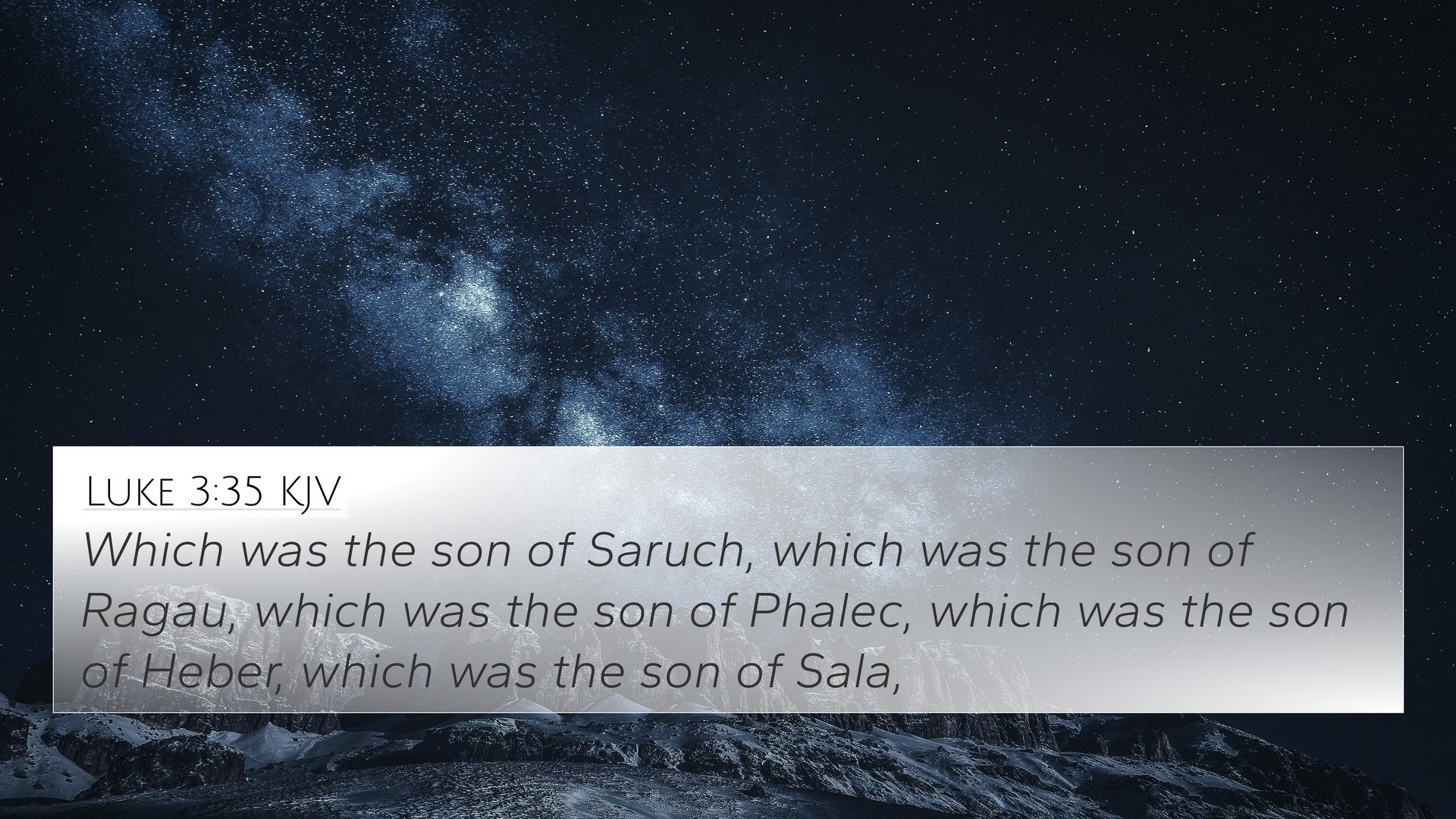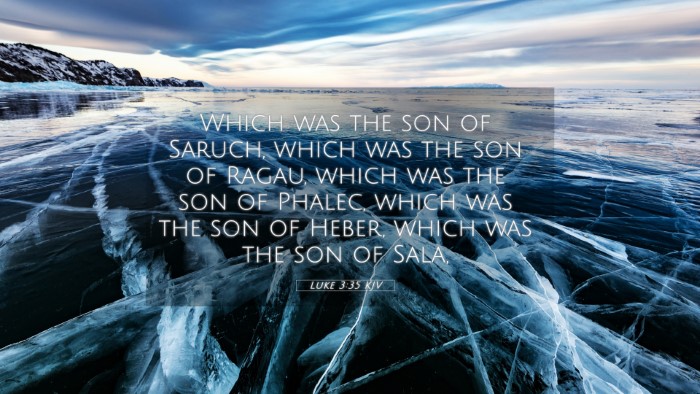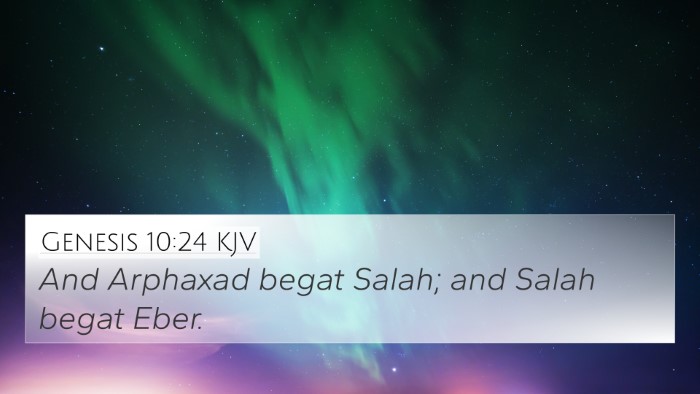Understanding Luke 3:35
Luke 3:35 reads:
"The son of Amram, the son of Hezron, the son of Perez, the son of Judah,"
This verse is part of the genealogy of Jesus Christ, emphasizing His lineage and the fulfilment of Old Testament prophecies regarding the Messiah's descent.
Significance of Lineage in Biblical Context
Genealogies in the Bible serve multiple purposes:
- Validation of Identity: They establish Jesus’ rightful place in Jewish history and prophecy.
- Connection to Promises: This lineage connects Jesus to the promises made to Abraham, Isaac, Jacob, and David.
- Demonstration of Fulfillment: The specific mention of Judah emphasizes the prophecy that the Messiah would come from the tribe of Judah.
Commentary Insights
Matthew Henry's Commentary
Henry notes the importance of the genealogical records in establishing Christ's authority and legitimacy. The mention of notable figures from the Old Testament underscores God's faithfulness in preserving His promises through generations.
Albert Barnes' Notes
Barnes highlights how these genealogies were particularly valuable for the Jewish audience, illustrating that Jesus fulfills the expectations surrounding the lineage of the promised Messiah.
Adam Clarke's Commentary
Clarke emphasizes that the genealogy serves to unite the Old and New Testaments, showing how Christ is the culmination of biblical history and divine purpose.
Bible Verse Cross-References
In studying Luke 3:35, several cross-references enhance our understanding:
- Genesis 49:10: A prophecy regarding Judah, indicating that the scepter shall not depart from him.
- 1 Chronicles 2:3-5: A record of the descendants of Judah, providing a deeper context for Jesus' lineage.
- Matthew 1:2-3: The genealogy in Matthew also traces Jesus' lineage back to Judah and emphasizes His royal descent.
- Hebrews 7:14: Affirms Jesus’ lineage from Judah, reinforcing the significance of this tribe in God’s redemptive plan.
- Revelation 5:5: Highlights Jesus as the Lion of the tribe of Judah, confirming His royal and messianic identity.
- Lamentations 4:20: Looks at the hope connected with descendants of the tribe of Judah.
- Isaiah 11:1: Prophecy that a shoot will come from the stump of Jesse, linking to Christ's lineage through David.
- Acts 2:30: Peter’s preaching reinforces Jesus' connection to David and the fulfillment of the promises made to him.
- Luke 1:32-33: The angel's proclamation about Jesus’ future reign as the King reinforces His rightful heritage.
- Romans 1:3: Paul identifies Jesus as coming from David's lineage, further establishing the messianic claims.
Exploring Connections Between Bible Verses
Establishing connections between Bible verses, especially the links throughout Scripture, reveals profound thematic and doctrinal insights, encouraging deeper study. Here are ways to explore these connections:
- Engage with a Bible concordance: Utilize this tool to find related verses and themes.
- Cross-reference Bible study methods: Employ methodologies that facilitate examining themes and narratives across different books.
- Identify inter-biblical dialogue: Look for dialogues between Old and New Testament writings that illuminate the continuity of God’s message.
- Utilize Bible reference resources: Find comprehensive materials that assist in linking various scripture passages.
Conclusion
Luke 3:35 may seem like a straightforward genealogical detail, but it encapsulates deep truths about Jesus’ identity, mission, and the historical fulfillment of God's promises. Through comparative Bible verse analysis and cross-referencing Biblical texts, readers can uncover the expansive narrative of faith that unites both Testaments, guiding their journey of understanding scripture.




